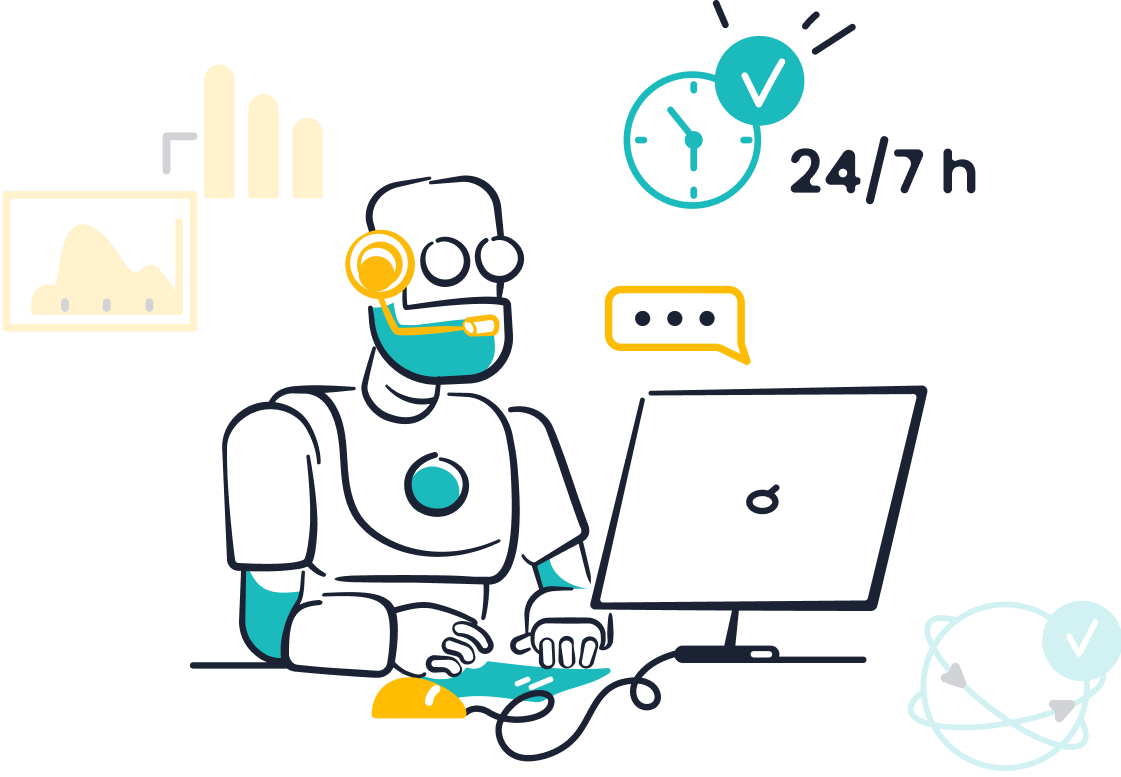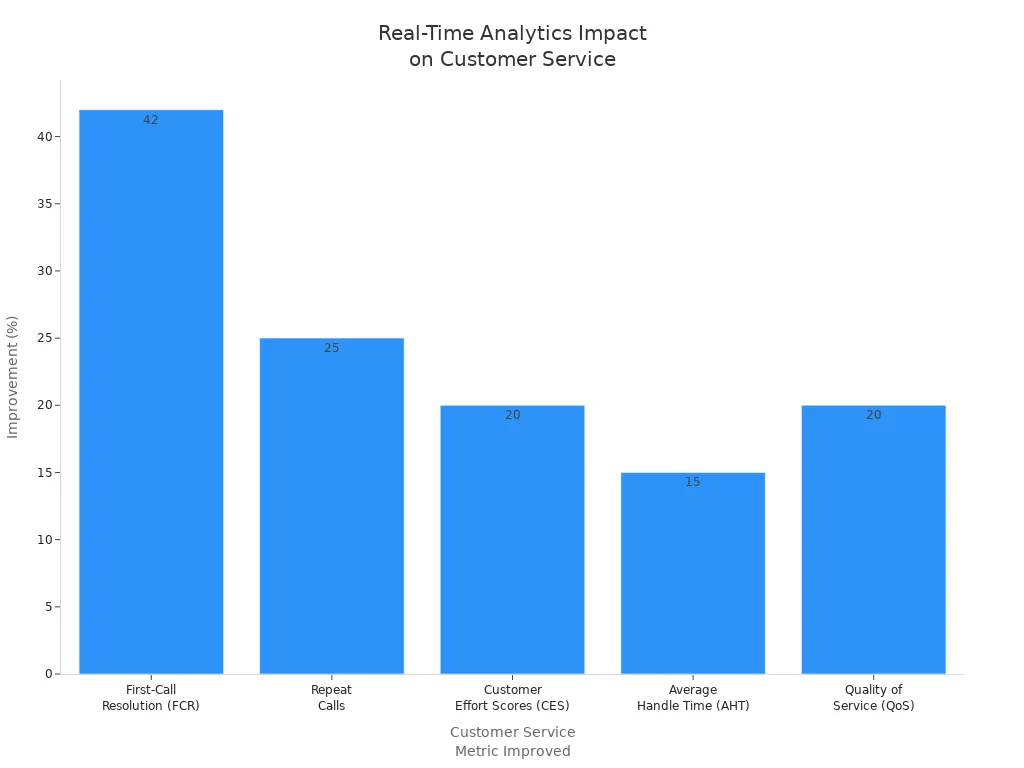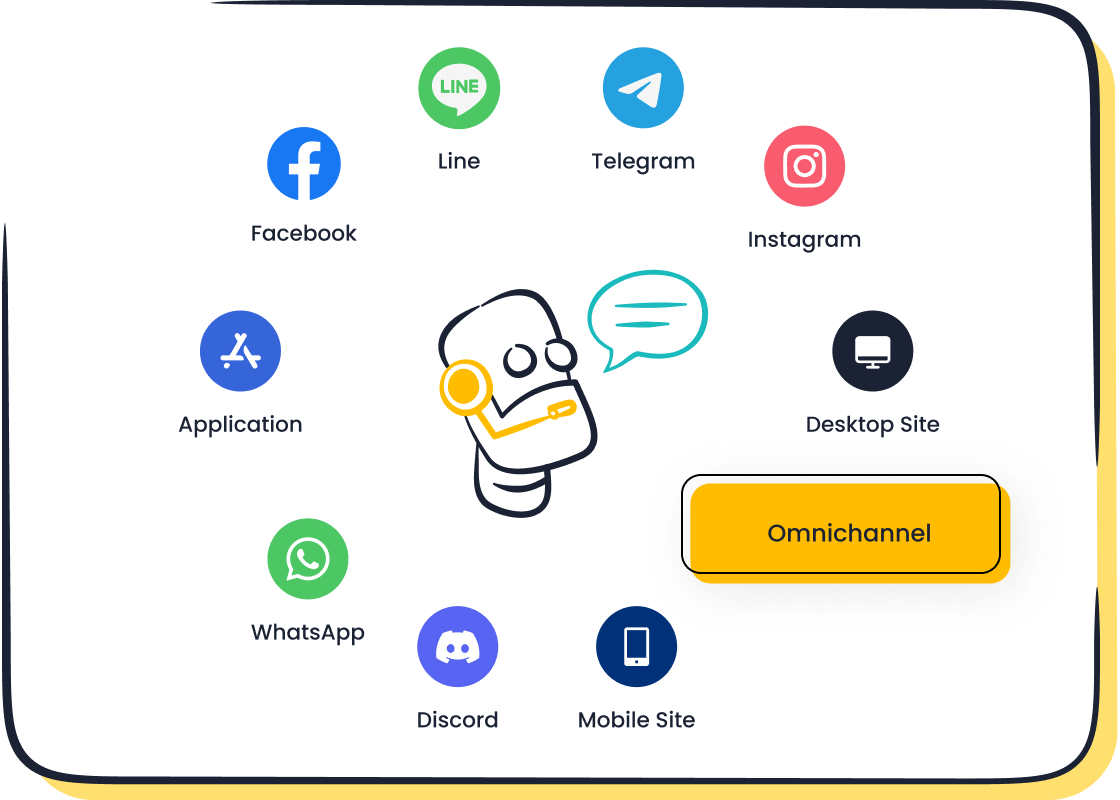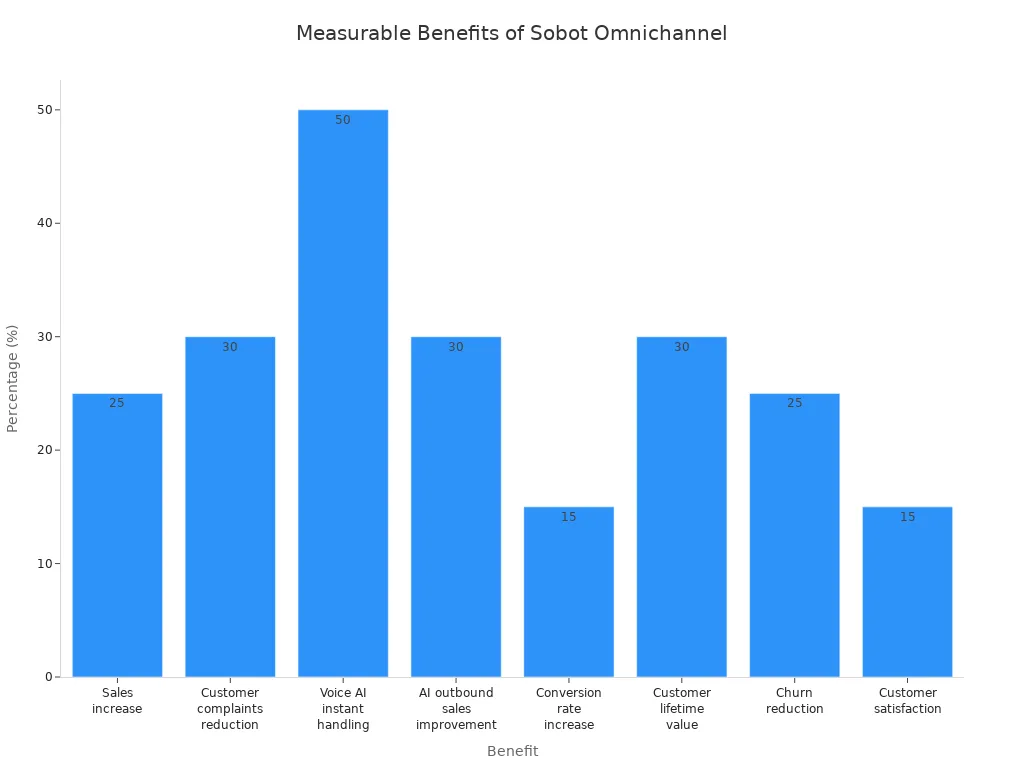What to Expect from Top CX Platforms in 2025

Customer experience platforms now change faster than ever. You see businesses racing to adopt new CX tools because customers expect more each year. Companies use AI, automation, and omnichannel integration to connect with customers on any device, at any time. Research shows that 95% of customer interactions will involve AI by 2025. The global CX platform market keeps growing, reaching $13 billion in 2024. You need to keep up with these changes to give customers the best experience. Brands like Sobot and the Sobot AI chatbot help you stay ahead in this fast-moving world. The Sobot call center brings all your customer contacts together, making each experience smooth and efficient.
CX Platform Trends 2025

Customer experience management keeps changing. You see new cx platform features every year. In 2025, three big trends shape customer experience platforms: AI and automation, omnichannel integration, and real-time analytics. These trends help you improve customer engagement, boost satisfaction, and make smarter decisions.
AI and Automation
AI and automation now drive cx platform innovation. You use customer experience software with AI to handle customer interactions faster and smarter. By 2025, 95% of customer interactions will involve AI. Chatbots answer questions, route tickets, and give feedback 24/7. You see AI-powered voice and speech analytics that analyze tone and emotion. These tools help you understand customers better and respond with empathy.
- AI chatbots handle up to 70% of customer interactions. You save time and reduce costs.
- Hyper-personalization lets you create unique customer journeys for each customer. Predictive analytics use customer feedback and behavioral data to suggest products or solve problems.
- Explainable AI builds trust. You show customers how AI makes decisions. Most customers want transparency in customer experience management.
- AI-driven emotional intelligence detects customer mood. You respond with care, increasing satisfaction by up to 50%.
Sobot leads in AI-powered customer experience tools. The Sobot AI chatbot works across channels, supports multiple languages, and helps agents focus on complex issues. You get seamless integration with your existing systems. Sobot’s platform boosts productivity by 70% and cuts costs by 50%.
Omnichannel Integration
Omnichannel integration is now essential for cx. You connect with customers on social media, email, chat, and voice. Customers expect a smooth experience across every channel. You use customer experience software to unify customer interactions and feedback.
- Companies with strong omnichannel strategies retain 89% of customers. You see a 25% increase in customer retention rates.
- Customers want personalized experiences. If you do not personalize, 60% of customers may leave.
- Omnichannel AI integration gives you a single view of the customer journey. You track feedback and engagement in real time.
- Retailers using omnichannel cx platforms report higher sales and customer lifetime value.
| Vendor | Omnichannel Innovation Highlights for 2025 |
|---|---|
| Sobot | AI-powered omnichannel solution, unified workspace, seamless integration, 24/7 support, analytics |
| AWS | Amazon Connect with generative AI, WhatsApp support, tested at scale |
| Genesys | AI-driven orchestration, CRM integrations, agentic AI for autonomous workflows |
| Twilio | Low-code omnichannel journey builder, real-time queue metrics, generative AI previews |
| 8x8 | Omnichannel with AI features, real-time language interpretation, Microsoft Teams alignment |
Sobot’s omnichannel solution helps you manage customer interactions across all channels. You get a unified workspace, AI-driven automation, and analytics for feedback management. Sobot’s platform improves customer satisfaction and retention.
Real-Time Analytics
Real-time analytics change how you manage customer experience. You see live dashboards, instant feedback, and quick decision-making. Customer experience platforms use AI and machine learning to process data fast. You track customer feedback, engagement, and sentiment as it happens.
- Real-time analytics help you reduce call abandonment rates by 25%. You adjust staffing and improve service.
- You improve First Call Resolution rates by 30% with instant access to customer insights.
- Supervisors use real-time reports to coach agents and fix problems quickly.
- Integration with CRM systems gives you a complete view of the customer journey.

| Platform | Key Real-Time Analytics Features | Benefits |
|---|---|---|
| Sobot | Unified analytics dashboard, live feedback, sentiment analysis | Faster decisions, improved customer experience |
| Qualtrics | Omnichannel data capture, AI for sentiment shifts | Reputation management, customizable platform |
| Tableau | Live visual analytics, augmented analytics | Handles large datasets, pre-built dashboards |
| Sprout Social | Automation for urgent messages, crisis alerts | Performance tracking, audience engagement |
| InMoment | AI-driven survey builder, predictive insights | Journey-based impact analysis, automated emails |
Sobot’s analytics tools let you monitor customer interactions and feedback in real time. You spot trends, fix issues, and improve customer experience management. Real-time feedback helps you make better decisions and keep customers happy.
You see cx platform trends like AI, omnichannel integration, and real-time analytics shaping the future. You use customer experience platforms and customer experience tools to deliver better experiences, gather feedback, and build strong customer relationships.
Pros and Cons of Customer Experience Platforms
Key Pros
You see many pros when you use cx platforms for customer experience management. These tools help you improve customer satisfaction and make your business more efficient. Here are some key pros you should know:
- Automation saves time and reduces manual work. You let AI chatbots handle regular customer interactions, so your team can focus on complex issues.
- Personalization creates unique experiences for each customer. You use customer experience software to deliver personalized experiences and boost engagement.
- Scalability lets you grow your support team and handle more customer interactions without extra cost.
- Advanced integration connects your cx platform with CRM, project management, and communication tools. You get a seamless workflow and better feedback management.
- Real-time analytics help you track customer feedback and satisfaction. You see trends and make quick decisions to improve customer engagement.
- Surveys triggered by customer behavior collect feedback at the right moment. You close the feedback loop and increase customer comfort with your brand.
- Tagging NPS survey responses helps you spot patterns and improve satisfaction.
- AI-powered cx platforms give you predictive analytics. You anticipate customer needs and reduce churn.
- Investing in cx platforms gives you a competitive advantage. You keep customers happy and loyal.
- You see measurable business impact. Improved customer satisfaction leads to higher retention and increased revenue.
Regular use of cx platforms helps you build customer loyalty and drive retention. You see direct links between feedback and satisfaction improvements.
Common Cons
You also face some cons when you use cx platforms. Knowing these cons helps you plan better and avoid problems. Here are the most common cons:
- Complex interfaces can overwhelm you. Too many features make customer experience tools hard to use.
- Training and onboarding take time. You need to learn new systems before you see results.
- Integration challenges disrupt your workflow. Connecting cx platforms with existing systems can be difficult.
- Dependence on development teams slows down customization. Coding requirements increase costs and delay changes.
- Poor internal communication causes feedback delays. You risk missing important customer feedback.
- Data silos prevent a unified view of customer interactions. You get inconsistent experiences and lower satisfaction.
- Unclear goals and metrics reduce focus. You waste resources and struggle to improve customer satisfaction.
- Lack of personalization increases churn. Customers expect personalized experiences and may leave if you do not deliver.
- Outdated technology leads to slow responses and poor analysis. You lose efficiency and customer engagement.
- Change management is hard. Adapting to new cx platforms takes effort and can cause resistance.
| Issue/Challenge | Impact on Adoption and Use | Suggested Solutions and Strategies |
|---|---|---|
| Overwhelming Interface & Feature Fatigue | Confusion, frustration, reduced efficiency. | Simplify UI, focus on user-centric design. |
| Training and Onboarding Difficulties | Slow onboarding, reduced adoption speed. | Tailored training programs, hands-on workshops. |
| Integration Challenges | Workflow disruption, inefficiencies. | Seamless integration with existing systems. |
| Dependence on Development Teams | Delays, higher costs. | No-code solutions for faster customization. |
| Data Silos | Inconsistent brand experiences, fragmented data. | Break down silos, unify customer data. |
You overcome many cons by choosing platforms with simple interfaces, strong integration, and clear training programs. Automation and feedback-driven optimization help you manage complexity.
Sobot Advantages
You get many pros when you choose Sobot for your cx needs. Sobot stands out among customer experience platforms with its AI chatbot and omnichannel support. Here are the top advantages:
- Sobot automates customer service operations. You reduce response times and improve ticket resolution rates.
- The AI chatbot handles customer interactions 24/7. You save up to 50% on agent costs and boost productivity by 70%.
- Sobot supports multiple languages. You reach more customers and provide personalized experiences.
- No-code setup makes Sobot easy to use. You customize workflows without needing developers.
- Sobot integrates with CRM and customer experience software. You get a unified workspace and seamless feedback management.
- The platform is scalable and user-friendly. You grow your business and keep customer satisfaction high.
- Sobot prioritizes data protection and transparency in AI usage. You build trust with customers and comply with regulations.
- Regular audits prevent algorithmic bias. Customers can opt out of AI-powered analysis.
- Sobot’s analytics tools help you monitor customer feedback and satisfaction in real time. You spot trends and improve engagement.
- Sobot’s omnichannel solution lets you manage customer interactions across all channels. You deliver consistent experiences and increase retention.
Agilent, a leader in life sciences, saw a sixfold increase in customer service efficiency after switching to Sobot. The company reduced costs by 25% and achieved a customer satisfaction score of 95%. Sobot’s AI chatbot handled routine inquiries, letting agents focus on complex issues. Agilent unified customer interactions and improved feedback management with Sobot’s omnichannel workbench.
You see Sobot’s pros in every part of your cx strategy. You automate customer interactions, personalize experiences, and improve satisfaction. Sobot helps you build customer loyalty, drive retention, and grow your business.
Sobot Chatbot and Omnichannel Solution

Chatbot Features

You can boost your customer service with Sobot’s AI chatbot. This tool works around the clock, so your customers always get help, even at night or on weekends. You do not need to know how to code to set it up. The chatbot uses smart technology to understand what people say and give the right answers. Here are some ways Sobot’s chatbot helps you:
- Provides 24/7 support, so customers never have to wait.
- Uses customer profiles to give personalized answers and product suggestions.
- Connects with your other systems, making it easy to manage all conversations in one place.
- Handles simple questions, so your team can focus on harder problems.
- Offers proactive help, like reminding customers about items left in their cart, which can increase your sales by up to 20%.
- Tracks how well it is doing with built-in analytics, so you can keep improving your service.
Many businesses see a 25% jump in conversion rates and a 30% drop in support costs after using Sobot’s chatbot.
Omnichannel Benefits
Sobot’s omnichannel solution lets you talk to your customers on any channel they like—chat, email, phone, or social media. You get one workspace for all messages, making your job easier and faster. The platform uses AI to answer questions quickly and accurately. Here is what you can expect:
| Benefit Description | Measurable Outcome |
|---|---|
| Increase in sales attributed to Sobot's omnichannel | 25% increase |
| Reduction in customer complaints | 30% reduction |
| Customer interactions handled instantly by Voice AI | Over 50% of interactions |
| Sales improvement via AI-powered outbound marketing | Over 30% increase |
| Increase in customer satisfaction | 15% increase |

You can see how Sobot’s customer support platform helps you reach more people, solve problems faster, and keep customers happy.
Industry Use Cases
Sobot works well in many industries. In retail, OPPO uses Sobot to give real-time updates and product tips, leading to an 83% chatbot resolution rate and a 57% rise in repeat purchases. Samsung uses Sobot’s multilingual chatbot and analytics to reach a 97% customer satisfaction rate. In finance, Opay improved satisfaction from 60% to 90% and cut costs by 20%. Agilent, a leader in life sciences, saw a sixfold boost in service efficiency and a 95% satisfaction score after using Sobot.
Comparing Top CX Platforms
Feature Comparison
When you compare top cx platforms, you notice many differences in features and capabilities. Most customer experience software offers journey mapping, AI and machine learning, and omnichannel support. You also see tools for personalization, centralized data collection, and customer feedback management. Some platforms include knowledge bases and automated customer service to help you reduce support load. Analytics and reporting features give you insights to improve your cx strategy. Pricing can vary a lot. You might pay per user, per interaction, or choose a flat-rate contract. Costs depend on the number of users, the volume of interactions, and the level of support you need. You should also watch for hidden costs like data storage, training, and scaling licenses.
Tip: Always check if the platform includes all the analytics and automation features you need before you decide.
Integration and Scalability
You want a cx platform that connects easily with your existing systems. Leading platforms offer seamless integration with CRM, ERP, e-commerce, and analytics tools. You can link platforms like Salesforce, HubSpot, Shopify, and Zendesk to create a single source of truth. This helps you break down data silos and deliver a unified experience. Scalability is important as your business grows. Look for platforms with AI-driven automation, modular workflow builders, and self-service interfaces. These features let you handle more customer interactions without adding more staff. Security and compliance also matter, especially when you scale up. Platforms with geo-distributed servers and strong privacy controls keep your data safe.
- Integration pros: unified data, faster workflows, better analytics.
- Integration cons: setup complexity, possible data migration issues.
- Scalability pros: supports growth, handles more users, adapts to new channels.
- Scalability cons: higher costs, need for ongoing training.
Industry Fit
Not every cx platform works well for every industry. You need to match the platform’s features to your business needs. For example, healthcare platforms focus on patient engagement and compliance. Finance platforms offer real-time risk assessment and predictive planning. E-commerce platforms provide omnichannel messaging and inventory optimization. You should check if the platform supports your industry’s regulations and unique workflows.
| Industry | Best-Fit Platforms | Key Benefits | Outcomes |
|---|---|---|---|
| Healthcare | Salesforce Health Cloud, Microsoft Health Bot | Patient engagement, compliance | 25% higher satisfaction |
| Finance | SuperAGI Agentic CRM, Goldman Sachs use case | Real-time risk, predictive planning | 30% more sales pipeline |
| E-commerce | Shopify, Stitch Fix, SuperAGI Agentic CRM | Omnichannel, inventory optimization | 20% higher order value |
When you evaluate cx platforms, consider integration, ease of use, scalability, personalization, security, and ROI. Test the platform with a free trial if possible. This helps you find the best fit for your business and industry.
Choosing the Right CX Platform
Business Needs
You need to start by looking at your business goals before you choose a cx platform. Ask yourself what you want to achieve with customer experience management. Do you want to improve customer satisfaction, increase customer retention, or boost customer engagement? Many businesses lose customers after just one bad experience. PwC found that 32% of customers leave brands for this reason. You should pick a platform that helps you collect customer feedback and use analytics to understand what customers want. Look for pros like easy-to-use customer experience software, strong automation, and tools for feedback collection. Avoid cons such as complex interfaces or slow onboarding. Make sure the platform supports surveys and Net Promoter Score programs. These features help you track satisfaction and improve retention.
Industry Requirements
Every industry has different needs for cx. Retailers need fast responses and personalized experiences. Financial services need secure communication and accurate analytics. Gaming companies want instant feedback and high satisfaction. You should check if the platform supports omnichannel communication. Customers expect to reach you by phone, chat, social media, or email. Consistency matters because customers want the same experience on every channel. Platforms with pros like strong integration and real-time analytics help you deliver seamless customer journeys. Avoid cons like data silos or poor personalization. Make sure the platform fits your industry’s regulations and workflows.
| Industry | CX Platform Pros | CX Platform Cons |
|---|---|---|
| Retail | Fast feedback, omnichannel support | Slow integration |
| Finance | Secure analytics, compliance | Complex setup |
| Gaming | Instant engagement, high satisfaction | Limited channel options |
ROI Considerations
You need to measure the return on investment when you choose a cx platform. Start by tracking metrics like customer lifetime value, churn rate, cost of support, average transaction size, and customer satisfaction scores. Use analytics to see how cx improvements affect retention and satisfaction. Calculate ROI by subtracting the cost of support from the financial gains, then divide by the total investment. Specialized ROI calculators can help you estimate results. Link cx improvements to outcomes like higher sales and better customer retention strategies. Watch for cons such as hidden costs or challenges in collecting customer feedback. Focus on pros like increased revenue, reduced churn, and lower service costs. Planning for these challenges helps you get the most satisfaction and retention from your investment.
Tip: Platforms that use AI and automation, like chatbots and recommendation systems, make it easier to deliver personalized experiences and improve customer satisfaction.
You see customer experience platforms changing fast in 2025. You need to keep your customers happy and improve satisfaction. Review your current tools and check if they help you reach higher customer satisfaction. Watch for new trends that shape how you serve customers. If you want to boost satisfaction, book a demo or talk to CX experts. Your customers expect the best every time.
FAQ
What is a customer experience (CX) platform?
A CX platform helps you manage all customer interactions in one place. You use it to improve support, track feedback, and boost satisfaction. These platforms often include chat, email, phone, and social media tools.
How does Sobot’s AI chatbot help my business?
You can use Sobot’s AI chatbot to answer questions 24/7. It handles simple tasks, saves you time, and lets your team focus on complex issues. You also cut costs and improve customer satisfaction.
Can I use Sobot with my current systems?
Yes, you can connect Sobot with popular tools like Salesforce, Shopify, and Zendesk. This integration gives you a single workspace and helps you manage all customer data easily.
What industries benefit most from Sobot?
You see Sobot used in retail, finance, gaming, education, and life sciences. Companies like Samsung, OPPO, and Agilent trust Sobot to improve customer service and efficiency.
How do I measure the ROI of a CX platform?
You track metrics like customer satisfaction, retention, and support costs. Use analytics to see how the platform improves these numbers. Higher satisfaction and lower costs show a strong return on your investment.
See Also
Discover The Leading Cloud Contact Centers For 2025
Best Ten Customer Feedback Software Solutions In 2024
Comprehensive Reviews Of Leading Contact Center Solutions 2024
